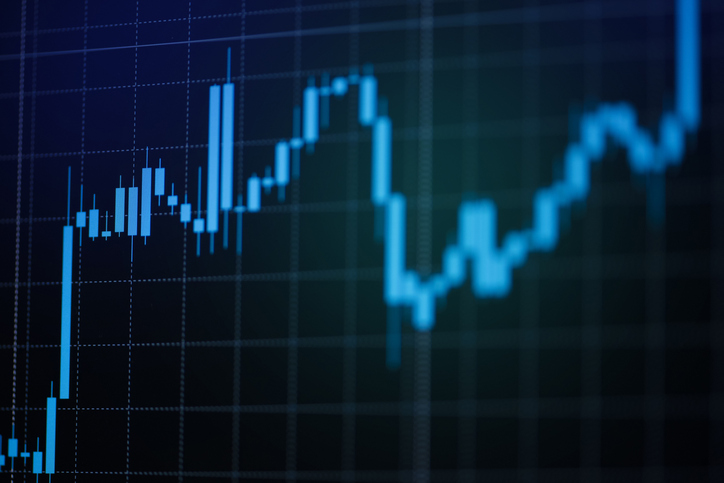When Bad Things Happen to Good Markets
Looking at today’s booming economy, the question is not whether it is good but whether you think it is going to get better.


Worried about where the stock market is going? You should be. The economic news seems good, but in the world of investing, good can be bad. Good times breed enthusiasm and complacency, a feeling that a rising market will rise forever. And yet, good times are often a harbinger of the apocalypse to come.
For example, in 1999, gross domestic product grew 4.7%, which turned out to be the fastest rate during the entire period from 1985 to 2017. Standard & Poor’s 500-stock index rose more than 20% in 1999, for the fifth year in a row. Then the dot-com bubble burst, and the market tanked.
In late August, the current bull market became the longest on record, at least dating back to 1932. (A bull market is generally defined as one that avoids a decline of 20%.) The Dow Jones industrial average has nearly quintupled from its 2009 nadir. The U.S. will probably end the year with the lowest unemployment rate since 2000 and the highest GDP growth rate since 2005. Interest rates are low. All is right with the economic world.
From just $107.88 $24.99 for Kiplinger Personal Finance
Become a smarter, better informed investor. Subscribe from just $107.88 $24.99, plus get up to 4 Special Issues

Sign up for Kiplinger’s Free Newsletters
Profit and prosper with the best of expert advice on investing, taxes, retirement, personal finance and more - straight to your e-mail.
Profit and prosper with the best of expert advice - straight to your e-mail.
Or is it? No one can predict disaster with anything close to certainty, but you should always be aware that bad things happen to good markets—and think about how to take cover. One reason for concern is that markets look ahead. The present may seem terrific, but you don’t buy a stock based on current corporate earnings. You buy it based on what you think will happen in the future—and specifically how the future compares with the present.
As good as it gets? Looking at today’s booming economy, the question is not whether it is good but whether you think it is going to get better. Will unemployment drop to 3%? Will annual GDP growth jump to 4%? Will earnings of S&P 500 companies keep rising at a 15% rate, as they did in 2017? Will businesses get another huge tax cut? Investors, said a bearish Morgan Stanley letter in July, are “finally faced with the proverbial question of ‘What do I have to look forward to now?’ ”
Good news also causes investors to bid up the price of stocks. Throughout this bull market, I took solace in the fact that people did not seem to be overpaying for shares. Those times are over. The Shiller price-earnings ratio, named for Nobel Prize–winning Yale economist Robert Shiller, modulates extreme short-term market moves by using an average of earnings over the past 10 years, adjusted for inflation. That ratio jumped to 33 in January—higher than at any point in more than 130 years except in the time leading up to the dot-com debacle and just before the Black Tuesday crash of 1929, which preceded the Great Depression.
Expansions generally end when the Federal Reserve takes away the punch bowl, raising interest rates to choke off inflation.
Never mind companies with crazy-high P/Es, such as Netflix. Be concerned about stalwarts such as Walmart and 3M, which are trading at valuations far exceeding their 20-year averages. The ratio of the price of S&P 500 stocks to their book value (that is, their net worth on the balance sheet) is the highest it’s been since 2002.
The U.S. economy has been growing now for more than nine years—the second-longest expansion ever, after the one in the 1990s. Expansions generally end when the Federal Reserve takes away the punch bowl, raising interest rates to choke off inflation. Rates get so high that they discourage business investing and consumer borrowing (and thus spending). The second quarter of 2018 notched the biggest year-over-year increase in the consumer price index since 2012, and there is good reason to believe that inflation will only accelerate. Interest rates are still low, but the Fed will have to ratchet them up quickly if inflation starts to get out of hand.
The economy has other headwinds that could develop into full-fledged hurricanes: an impending trade war, increased borrowing by the Treasury as trillion-dollar deficits loom, oil prices that have risen about 50% in a year (energy price spikes have preceded five of the last six recessions), and geopolitical concerns across the globe. Finally, according to a recent headline on Bloomberg News, “The U.S. Housing Market Looks Headed for Its Worst Slowdown in Years” (see Market Signs to Watch).
But as the title of a book by the late comedian Gilda Radner put it, It’s Always Something. Global threats—political and economic—abound at all times in history. Markets sometimes underrate them, but the threats are typically reflected in the prices of stocks. Enthusiasm and complacency, which are what worry me, are different. These are emotions that often point investors in the wrong direction.
Mercurial Mr. Market. The best metaphor for this phenomenon is “Mr. Market,” a concept invented by Warren Buffett’s mentor, Benjamin Graham. Mr. Market has emotional problems. Sometimes he’s euphoric and bids prices to the sky. Other times, he is depressed, fears the worst, and is willing to unload his portfolio at low prices. Right now, there is evidence that Mr. Market is on a sugar high.
The question for investors is, “What can I do with this warning?” To get to an answer, imagine you had bought an S&P index fund at the worst possible time, in mid 2007. In less than two years, the fund would have lost about half of its value. But in four years, it would have exceeded its previous peak. The S&P 500, which hit a low of 666 in March 2009, recently closed at 2875. That is the reason I believe buy-and-hold is the best strategy—even if you suspect tough times are ahead.
Graham’s advice was to exploit the mental disorder of Mr. Market by looking for stocks that, even in a time of euphoria, continue to be shunned by investors. Realize that these stocks will also be hurt in a market downturn, but they don’t have as far to fall.
A good way to find such stocks is by searching the portfolios of good value-focused funds, such as Fidelity Low-Priced Stock (symbol FLPSX), which owns companies that have above-average earnings yields (earnings divided by price—a good metric for value). Among its top holdings: Oracle (ORCL, $49), the business software giant; insurer UnitedHealth Group (UNH, $264); and Murphy Oil (MUR, $31), an energy firm. (Prices are through August 25; stocks and funds I like are in bold.)
Another good performer is T. Rowe Price Value (TRVLX). Attractive holdings include Cisco Systems (CSCO, $46), which makes and sells internet networking products; regional banking and asset-management firm PNC Financial Services Group (PNC, $143); and American Airlines Group (AAL, $39). Or you can buy exchange-traded funds such as Vanguard S&P 500 Value (VOOV, $112), which owns the value-stock components of the benchmark index, and WisdomTree US High Dividend (DHS, $72). This ETF owns stocks with high dividend yields, which are often a sign of value.
Finally, be sure that the gains in recent years have not produced a portfolio that is out of whack. If your intention 10 years ago was to own 60% stocks in your retirement account, you may well own 74% today. You’ll need more ballast from bonds and cash as you batten down the hatches and ride out the storm. Because no matter how good things look today, you can be sure one will arrive. Eventually.
James K. Glassman chairs Glassman Advisory, a public-affairs consulting firm. He does not write about his clients and owns none of the stocks or funds recommended in this column.
Profit and prosper with the best of Kiplinger's advice on investing, taxes, retirement, personal finance and much more. Delivered daily. Enter your email in the box and click Sign Me Up.

-
 Forget FIRE: Why ‘FILE’ Is the Smarter Move for Child-Free DINKs
Forget FIRE: Why ‘FILE’ Is the Smarter Move for Child-Free DINKsHow shifting from "Retiring Early" to "Living Early" allows child-free adults to enjoy their wealth while they’re still young enough to use it.
-
 7 Tax Blunders to Avoid in Your First Year of Retirement
7 Tax Blunders to Avoid in Your First Year of RetirementA business-as-usual approach to taxes in the first year of retirement can lead to silly trip-ups that erode your nest egg. Here are seven common goofs to avoid.
-
 How to Plan for Social Security in 2026's Changing Landscape
How to Plan for Social Security in 2026's Changing LandscapeNot understanding how the upcoming changes in 2026 might affect you could put your financial security in retirement at risk. This is what you need to know.
-
 Stocks Rise to the Spirit of the Season: Stock Market Today
Stocks Rise to the Spirit of the Season: Stock Market TodayInvestors, traders and speculators are beginning to like the looks of a potential year-end rally.
-
 Nasdaq Leads as Tech Stages Late-Week Comeback: Stock Market Today
Nasdaq Leads as Tech Stages Late-Week Comeback: Stock Market TodayOracle stock boosted the tech sector on Friday after the company became co-owner of TikTok's U.S. operations.
-
 Nasdaq Sinks 418 Points as Tech Chills: Stock Market Today
Nasdaq Sinks 418 Points as Tech Chills: Stock Market TodayInvestors, traders and speculators are growing cooler to the AI revolution as winter approaches.
-
 Stocks Struggle Ahead of November Jobs Report: Stock Market Today
Stocks Struggle Ahead of November Jobs Report: Stock Market TodayOracle and Broadcom continued to fall, while market participants looked ahead to Tuesday's jobs report.
-
 AI Stocks Lead Nasdaq's 398-Point Nosedive: Stock Market Today
AI Stocks Lead Nasdaq's 398-Point Nosedive: Stock Market TodayThe major stock market indexes do not yet reflect the bullish tendencies of sector rotation and broadening participation.
-
 Dow Adds 646 Points, Hits New Highs: Stock Market Today
Dow Adds 646 Points, Hits New Highs: Stock Market TodayIt was "boom" for the Dow but "bust" for the Nasdaq following a December Fed meeting that was less hawkish than expected.
-
 Dow Adds 587 Points as Stocks Bounce: Stock Market Today
Dow Adds 587 Points as Stocks Bounce: Stock Market TodayThe main indexes rebounded sharply Monday after President Trump took a calmer stance toward China.
-
 S&P 500 Hits New Highs as Rally Resumes: Stock Market Today
S&P 500 Hits New Highs as Rally Resumes: Stock Market TodayTech stocks were the biggest gainers on Wall Street today, with Nvidia and Dell making notable moves.